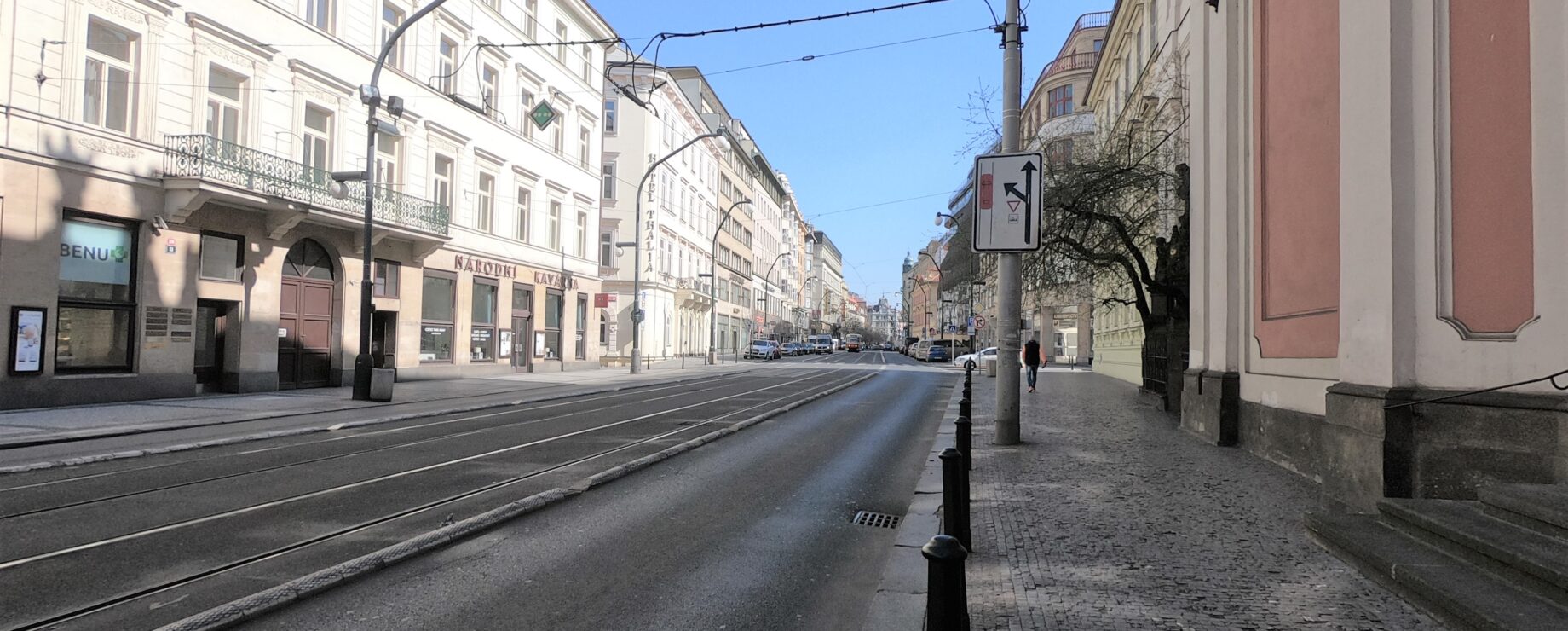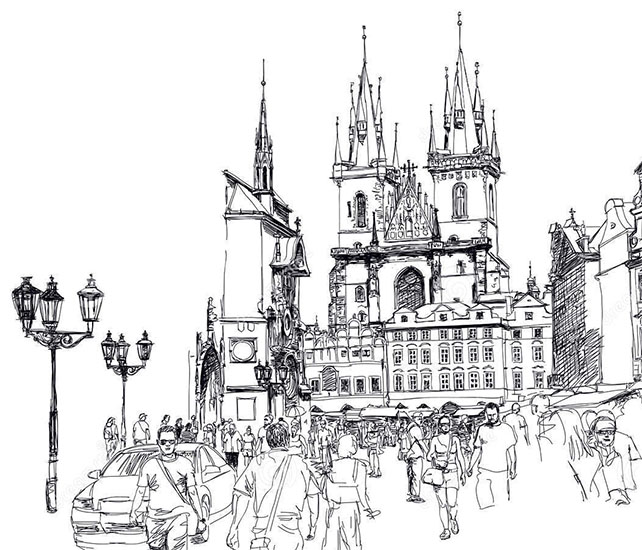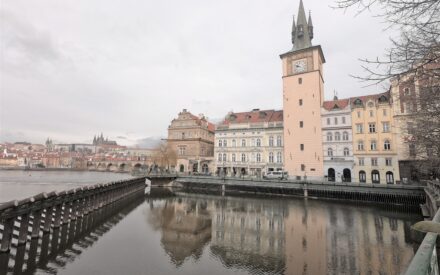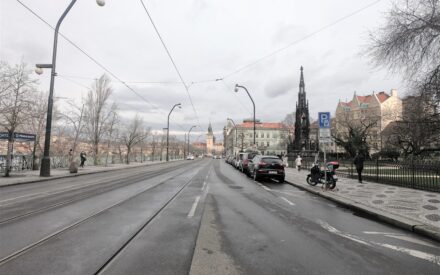
Ferdinandova třída
(Ferdinandstraße, since 1919 Národní třída)
In the last years of the Habsburg monarchy and in the time of the First Czechoslovak Republic, Národní třída was the Czech lands‘ principal thoroughfare. From 1864 until the end of World War I it was named in honour of the Emperor Ferdinand I (1503–1564) – Ferdinandova třída (Ferdinand’s Avenue).
The Description of a Struggle (Beschreibung eines Kampfes) is Kafka‘s first large comprehensive prose piece, which first saw light between 1904 and 1907 and was later reworked around the turn of the years 1909/1910. The use of first-person narrative is very faithful to the narrative style which was typical for Prague literature of that time, even in terms of the specific topography of the story – streets and buildings are given their real names, although this reality works in a somewhat alienating fashion due to the rather bizarre, dreamlike or totally unreal events that are described around them (in a similar way we may recall Leppin‘s novel Severin’s Road to Darkness (Severins Gang in die Finsternis) and so forth). Severinova cesta do temnot apod.).
As can be seen throughout the story, the main protagonist has problems understanding his companion, which is due to his lack of self-confidence and fear of proximity which gives the outside world a dangerous appearance. Herein we can see the author’s own problems. In Kafka‘s early texts the outside world is formed only partly through narrative blocks of individual characters, which are, however, slightly peculiar and are mostly devoted to their own train of thought or direct hallucinations.
Both main characters leave the party or ball in one of Prague’s New Town houses – it is carnival time – and they are going for a walk which leads them across the Vltava River to Petřín.
Franz Kafka – The Description of a Struggle (Beschreibung eines Kampfes) (pages 11-14):
When we reached the Ferdinand’s Avenue, I noticed that my acquaintance had begun to hum one of the tunes from “The Dollar Princess“, very quietly, but I could hear him quite well. What does it mean? Does he want to offend me? Which means I couldn‘t care less about this music at this moment, even with all this walking. Why is he not actually talking to me? If he does not need me why doesn’t he leave me alone? (…)
But my acquaintance was still behind me, even upping his step when he realised he was lagging behind. Not a word was uttered, we also could not say that we were running. Though I wandered if it would not be possible to turn into some side street, because I really was not obliged to go on any common walk. (…)
My feet were getting more and more tired and in any case I was already set on going home and lying on my bed, when suddenly I wasn’t sure whether or not I should say goodbye to my acquaintance when I left. I was too timid, though, to go off without a word, and too weak to utter a loud farewell. I therefore stopped, leaned against the moonlit wall of a house and waited
This guided walk is a part of the “Democracy on the Brink. Historical lessons from the late 1930s” project supported by the Europe for Citizens programme of the European Union.
Další místa na téma "A literary walk through Kafka’s Prague on the trail of his story Description of a Struggle"


